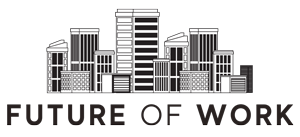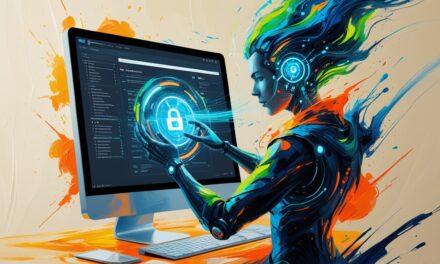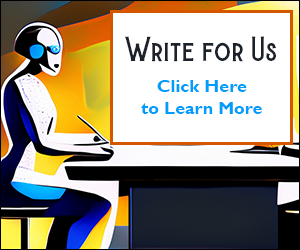Rapid digitisation has placed immense pressure on the workplace and our “ancient” brains. Today’s knowledge workers spend the majority of their working hours juggling emails and video calls, leaving little time or brain space to do their actual work or develop new skills.
To meet the demands of a digitised and increasingly fast-paced environment, they adopt a 24/7 availability approach, try absorbing vast amounts of information and constantly switch between tasks. This machine-like behavior is unsustainable and leads to burnouts, also making workers less competitive in the future of work.
Overwhelmed workers increasingly rely on AI to do the work that has traditionally been considered human – problem-solving and creativity. Organizations that want to leverage the best human qualities of employees in the digital age urgently need to implement digital wellbeing principles in their core strategy to address the following challenges.
1) Challenge: more information to process
We’re drowning in an ever-growing sea of information. Studies suggest that individuals consume between 34 and 74 gigabytes of data daily, equivalent to reading 168 newspapers or watching 16 movies. This data deluge is expected to escalate with the introduction of more communication channels in the workplace. The resulting “digital debt” — unanswered emails and overflowing meeting schedules — leaves us with minimal resources to focus and retain information. In the face of constant urgency and noise, distinguishing important signals becomes nearly impossible.
More information also leads to choice overload, causing people to procrastinate and avoid making decisions (in a famous experiment, when people were offered to choose between 6 and 24 types of jams, those who were offered more jams, ended up buying nothing).
In response to information overload, we resort to ineffective coping mechanisms such as digital procrastination (i.e. browsing through social media instead of work) and/or outsourcing our memory to devices, when instead of trying to remember something, we google it. Science shows that the more we do “cognitive offloading”, the more difficult it becomes for us to memorize and learn new things. We are more likely to forget information that we believe is available online, and more likely to remember where to find the information rather than the information itself. This makes it very difficult to learn anything new, as the brain essentially does not bother creating neural pathways and so doesn’t properly integrate new information.
What managers can do: First, be very clear about the work priorities. If you are sending multiple emails or calls, make sure that employees know specifically what they are expected to pay attention to and act upon first. Whenever you can, avoid CC-ing people just for the sake of it to reduce information noise. Some companies even ban internal email at specific hours to leave some thinking space. Avoid booking people into meetings unless they really need to be there – and try to book yourself out of such meetings, too. Shorten the remaining ones. Some companies implement no meeting days.
Second, educate your employees about how the brain works and why it struggles to process an excessive amount of information in a given time frame, and why more information doesn’t necessarily mean a better-informed choice.
Question to reflect upon: How can you create culture, where people have thinking space on a regular basis?
2) Challenge: intensified communication and interruptions
Since the pandemic began, the number of emails, chats, and video calls has continually increased (and it never went back after the pandemic was finished). Microsoft estimates that last year 57% of the user’s time in the Microsoft 365 software was spent on communication, and just 43% on creation.
Not only do we receive more emails and calls, but we are also expected to respond instantly to prompts from colleagues and clients, creating a constant stream of interruptions while trying to focus on work-related tasks or learning. According to researcher Gloria Mark, the average knowledge worker experiences interruptions every 47 seconds. After already 20 minutes of interrupted performance the levels of stress and frustration significantly increase.
What managers can do: Encourage a culture of “deep work,” where individuals focus on one task at a time. Safeguard your own “deep work” hours by scheduling them on your agenda and making them non-negotiable. Keep your mailbox and other chat options turned off when focusing and place your phone in another room when possible (research shows that the mere presence of our smartphone reduces cognitive abilities). Consider making “focused attention time” one of your or your employees’ Key Performance Indicators (KPIs). Meetings without devices are another option (for example, Amazon senior management receives printouts and time to read through materials at the beginning of meetings, with no PowerPoint used).
Question to reflect upon: Do the digital communication tools we use in the team support focus, or do they promote distractions?
3) Challenge: the perceived shortage of time
Constant information overload and non-stop communication contribute to the widespread feeling that there’s never enough time in the day. Nearly two-thirds of people (64%) struggle with time and energy to fulfill their job responsibilities, a trend highlighted in the Microsoft 2023 report.
Ineffective strategies to address this perceived time shortage include engaging in multitasking (or task-switching) behavior and working longer hours, when everyone finally leaves and mailboxes and agendas become quiet again. Both approaches are detrimental to our brains, negatively impacting health and work quality.
It’s crucial to recognise that our brains and bodies require time for thoughtful decision-making, involving slow mental processes for proper digestion of information. Rushed and overwhelmed states increase the likelihood of making inferior choices and decisions, leading to more mistakes. Learning new skills also suffers due to the perceived time shortage, with bite-sized self-paced e-learning, while popular, proving inadequate for overwhelmed brains. When our working memory is busy juggling various tasks, we don’t properly integrate information we acquire (it’s like a librarian who has too many books at once to arrange on the shelves). Feeding bite-sized learning to an overwhelmed professional is similar to trying to feed an obese person with massive digestion problems tiny portions without addressing the main health issue they have. A more radical solution is needed.
What managers can do: Start with yourself and limit how many tabs you have open at once. Try working in a single-tasking vs multitasking mode for a week, and notice how this changes your performance. Take a minimum of 15-minute breaks between meetings – this gives your brain time to destress. Ensure that employees have dedicated time to study, which they don’t need to take out of their workday. The best learning experiences will combine in-person and online methods, be interactive, involve peer discussion, and be based on cohort learning (because we learn best with/from other human beings).
Consider experimenting with a shorter workweek (i.e. 4 days instead of 5). Microsoft Japan experimented with a four-day workweek, finding that productivity increased by 40%. This case study demonstrates how reevaluating traditional work hours can address the perceived shortage of time.
Question to ask yourself: Am I doing something that makes employees feel that they are short of time? How can I encourage a slower culture without compromising on the quality of work?
4) Challenge: no boundaries and being “always on”
Technology has removed all boundaries—space, time, or psychological ones—for both good and bad. Our work is rarely finished, and we can contact or be contacted at any time. However, breaks are essential. Research shows that the mere expectation of a work-related email outside of working hours increases stress levels. Using technology for leisure, such as browsing social media or watching Netflix after a long workday, doesn’t contribute to true rest and may leave us feeling more tired.
What managers can do: Make time off predictable and required. Harvard and BCG research indicates that professionals who take planned unplugging breaks, making themselves unavailable for digital communication, experience improved performance and better relationships within the group and with clients. You can follow Volkswagen that implemented a policy that prevents emails from being sent to employees’ smartphones after work hours, contributing to employee’s wellbeing by setting clear boundaries on digital communication.
Question to ask yourself: Is there an implicit expectation to be “always on” in your team or division? Who is setting the tone, and how?
5) Challenge: Need of creative problem-solving (and lack thereof)
Constant technological innovation demands that employees consistently generate solutions for complex problems. However, as previously highlighted, modern employees often lack the cognitive, attentional, and emotional capacity required for these tasks. Microsoft notes that individuals struggling with time and energy for their job are 3.5 times more likely to face challenges in innovation and strategic thinking.
Researcher Moshe Bar has established that an overloaded brain defaults to the least interesting solution. In simpler terms, when employees are navigating between video calls, messages, and texts while expected to generate creative ideas, they are set up for failure. Instead, overloaded individuals lacking the necessary brain capacity for their human work often turn to AI, expecting it to solve their problems. This shift has led to an increasing number of workers relying on AI for creative problem-solving.
What managers can do: Acknowledge the strain on employees’ capacity for creative tasks due to constant digital demands. Create dedicated thinking time and foster a balance between human problem-solving and the utilization of AI. For example, 3M allows employees to spend 15% of their work hours on personal projects, fostering creativity and innovation.
Question to reflect upon: Does your leadership style promote a healthy balance between human creativity and technological assistance? Do people have time and brain space to be creative?
To conclude, prioritising Digital Wellbeing at work can lead to a more sustainable and successful work environment, ensuring readiness for the future of work. To tackle the challenges like information overload, constant interruptions, and a feeling of not having enough time, companies can create a culture that values clear priorities, minimizes unnecessary communication, and provides time for focused thinking and creativity.

Dr Anastasia Dedyukhina is a TEDx and keynote speaker, author of Homo Distractus,, and founder of Consciously Digital - a global network of digital wellbeing coaches who help individuals and organizations develop a more balanced approach to their relationship with technology.






